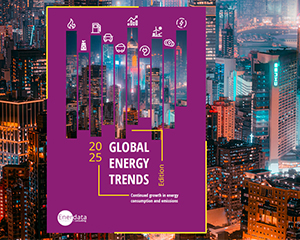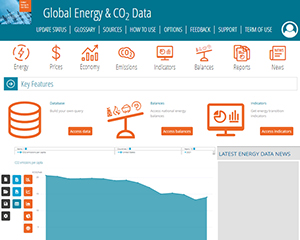CO2 emissions from fuel combustion
CO2 emissions grew by 1.5% in 2024, fuelled by the BRICS, especially China and India.
34%
China accounts for 1/3 of global emissions in 2024.
CO2 emissions grew by 1.5% in 2024, fuelled by the BRICS, especially China and India.
Global CO2 emissions from fuel combustion continued to increase in 2024 (+1.5%), in a context of rising energy consumption and record air traffic.
The largest increases in emissions came from China (+2%) and India (+5%), which together accounted for 43% of global CO2 emissions; higher electricity demand amid heatwaves and steady economic growth in these two coal-intensive countries contributed to this rise, which is in line with the 2010-2019 average (though slower than in 2023). CO2 emissions also surged in Indonesia (+9%) and in Vietnam (+14%) over a soaring coal consumption; their increase was moderate in Russia (+1%), Türkiye (+2%), Brazil and Mexico (+1% each). Overall, the share of BRICS in global CO2 emissions continues rising, reaching 51% in 2024 (up from 28% in 2000 and 40% in 2010).
On the contrary, CO2 emissions decreased in the largest EU countries (including -3% in Germany), in the UK (-4%, over continuous coal phase out and rising renewable power generation), in Japan and South Korea (-2% and -3%, respectively, over higher nuclear and renewable power generation), and in North America, though at a slower pace due to higher gas-fired generation (-0.5% only in the US and -1% in Canada). Emissions also contracted by 4% in Argentina, where coal-fired power generation halved in 2024.
Breakdown by country (MtCO2)
World
Trend over 1990 - 2024 - MtCO2
Breakdown by energy (2024) - MtCO2
Our 2025 edition of Global Energy Trends presents insights on essential energy data.
We have contextualised these findings against long-term climate targets :
- Which must accelerate their efforts to meet 2050 targets?
- What are the underlying drivers explaining why Europe is struggling to achieve the Paris Agreement objectives?
- Which regions are making substantial contributions to climate mitigation?
Need more data? All the information presented in this energy data tool are extracted from Global Energy & CO2 Data service, the most comprehensive and up-to-date database on all CO2 emissions from fuel combustion by sector and sources, industrial process, waste, but also on CH4, N2O, PFC, SF6 emissions. Detailed indicators are available by country and by sector.
Discover this service


